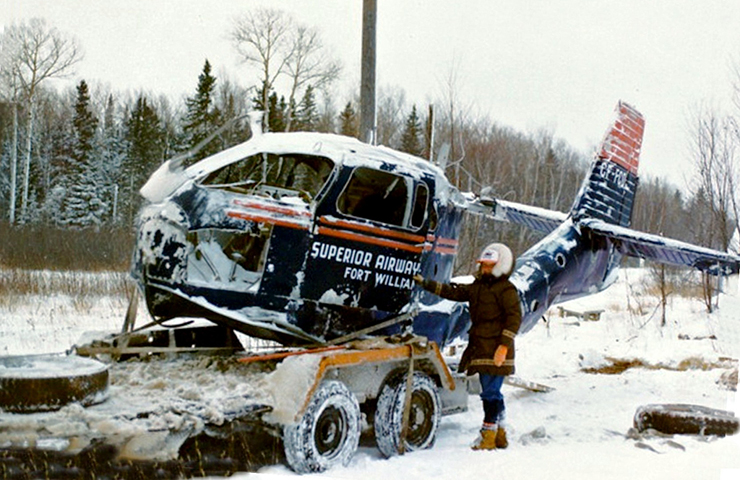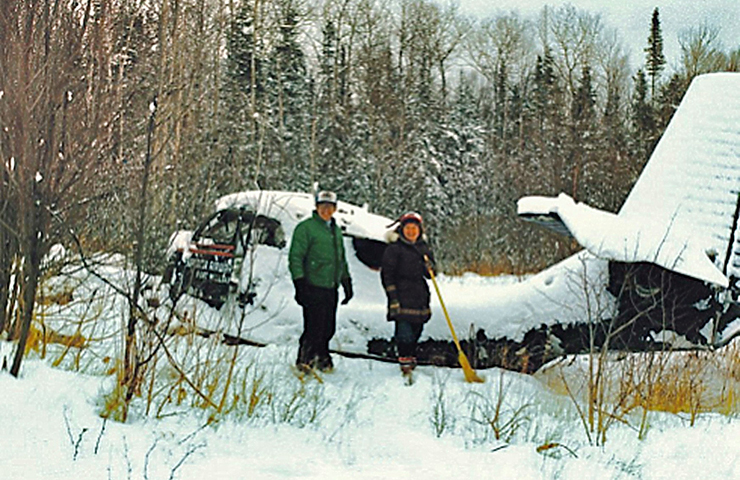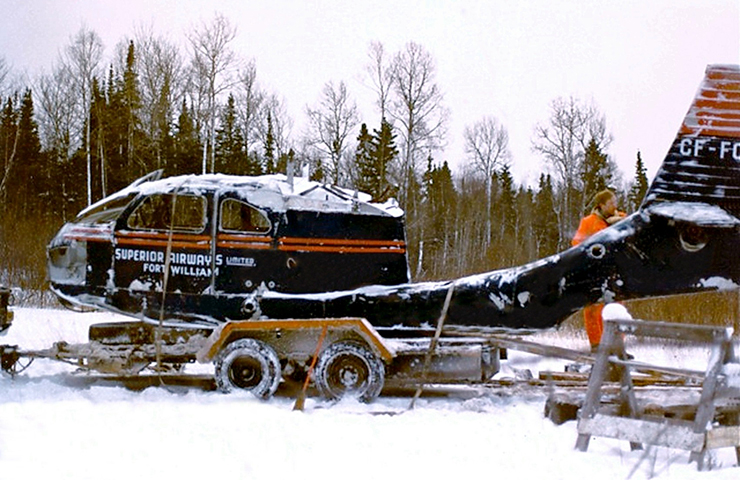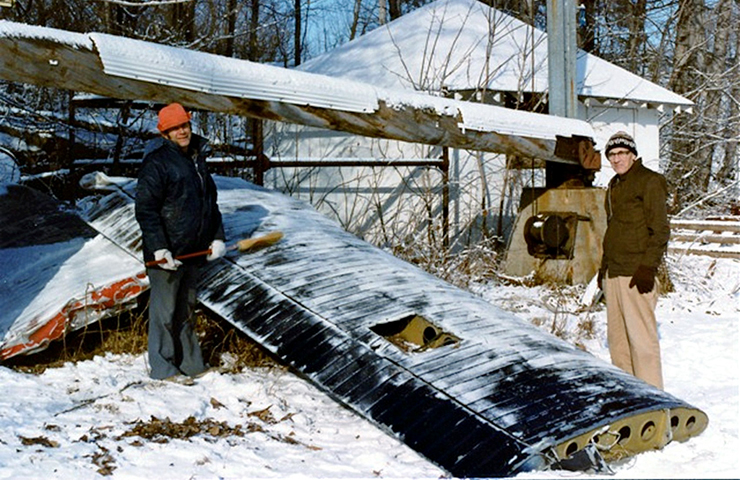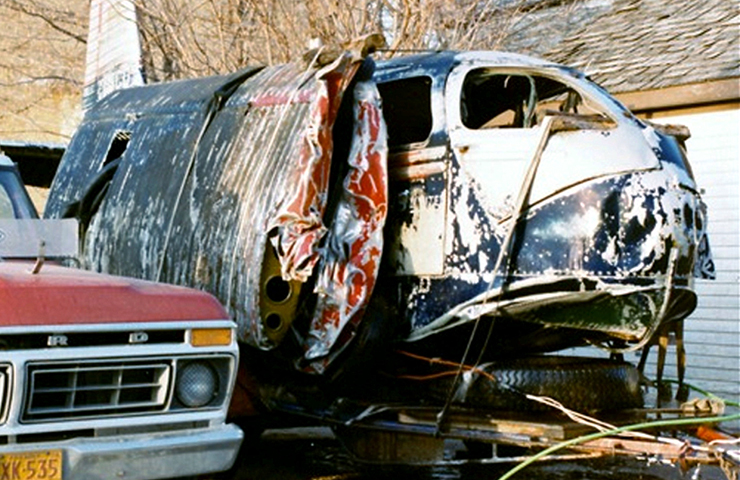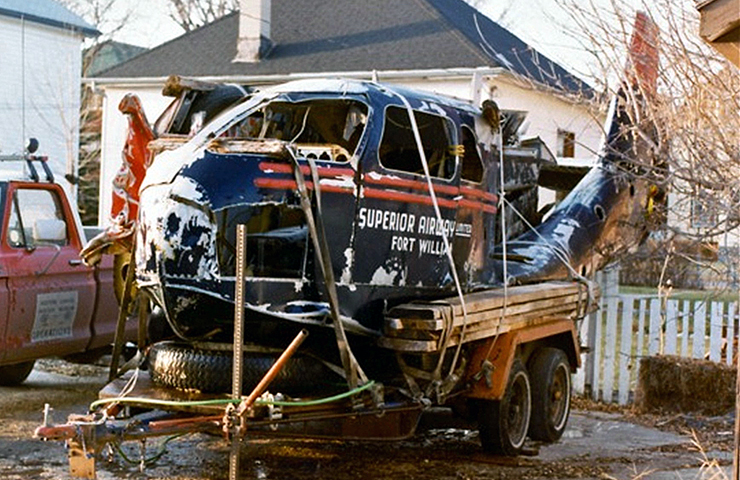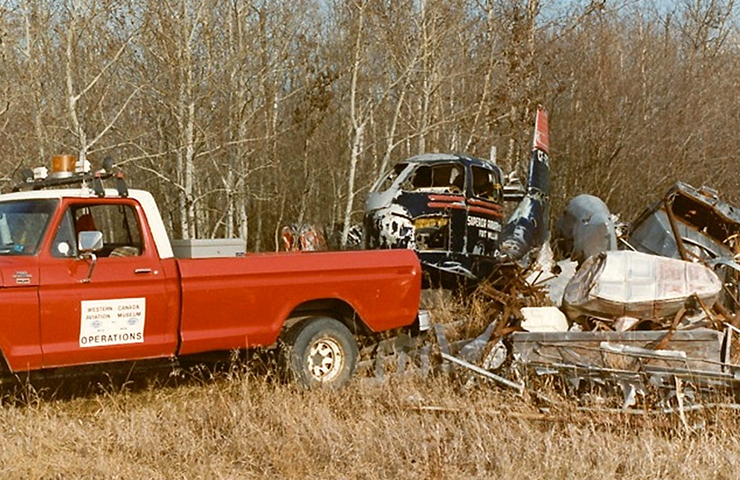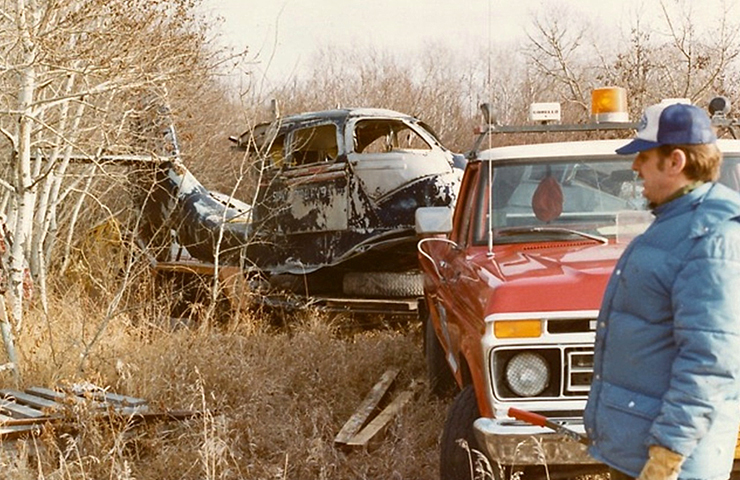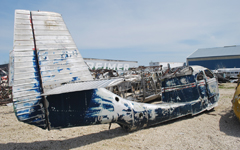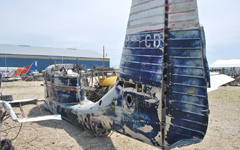|
CF-FCD
|
|
|
|
|
|
|
|
|
|
Saturday 31 October 1981: This shows Liz and husband Robin Webster. Liz is the
daughter of Orville J. Wieben who founded Superior Airways. She and
her sister Robbie both held commercial pilots licenses. (Photo: © Robert W. Arnold).
After the aircraft crashed near Rossport, Ontario, a small hamlet located on the north shore of Lake Superior, the aircraft was dismantled and brought back to the Wieben property at Thunder Bay. The wings were stored at another Wieben property which was located at Vickers Heights, a few miles outside of Thunder Bay. Here they lay until November 1981. It appears that Liz Weiben contacted the WCAM and offered the aircraft (less engine), which was gratefully accepted. Bob had already helped recover several aircraft from the bush under difficult conditions, often taking weeks of vacation to achieve. By comparison, this was an easy one, and only involved a long days journey from Winnipeg to Thunder Bay and return two days later.
|
|
|
|
Saturday 31 October 1981: This photo shows
the fuselage being winched
onto the trailer and now
strapped down, ready to
move on to Vickers Heights
in the morning to pick up
the wings. (Photo: © Robert W. Arnold).
|
|
|
|
Sunday 01 November 1981: This shows
the two wings being
cleared of snow by Bob's
uncle (in the red hat) and
a colleague. (Photo: © Robert W. Arnold).
|
|
|
|
Monday 02 November 1981: This shows the aircraft still on the
trailer, but now safely back in Winnipeg at Bob Arnold's
house. It remained here until the following
weekend, when Bob towed it to the Keith Olson Farm, East Selkirk, where it was placed in outside storage for several years.
(Photo: © Robert W. Arnold).
|
|
|
|
Monday 02 November 1981: At Bob Arnold's. (Photo: © Robert W. Arnold).
|
|
|
|
Saturday 07 November 1981: The aircraft is being unloaded at a farm at East Selkirk, Manitoba, belonging to
Keith Olson. Bob's Ford pickup truck
being used this time. I commented to Bob that it looks like he is
dumping it in the bushes. He explained that he was, as it was more
sheltered than in the open, which makes sense, especially when it lay
there for about 19 years! Keith Olson was also involved with WCAM and stored several aircraft
which included a Viscount forward fuselage section. East Selkirk is
northeast from Winnipeg near the Red River. (Photo: © Robert W. Arnold)
|
|
|
|
Saturday 07 November 1981: The gentleman in photo is Keith Olson, on who's property the
aircraft remained until circa 2000. I met Keith during a visit to WCAM
last May. And Bob of course. (Photo: © Robert W. Arnold)
|
|
Circa 2000, CF-FCD was moved down to its current location in a WCAM storage compound at St. Andrews Airport, outside of Winnipeg This compound holds all the wrecked aircraft that have been recovered over the years and either await restoration or disposal to others or for some, sadly for final scrapping, as they are beyond help, without pots of money. Western Canada Air Museum Website: Click on photos below for large size!
|
